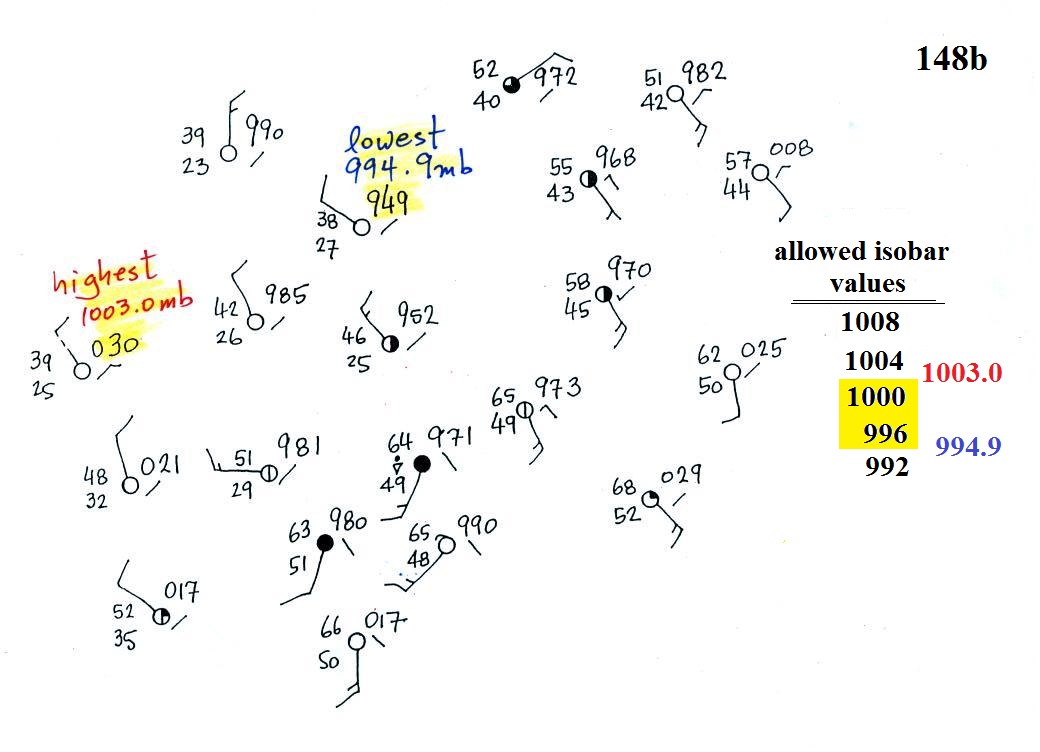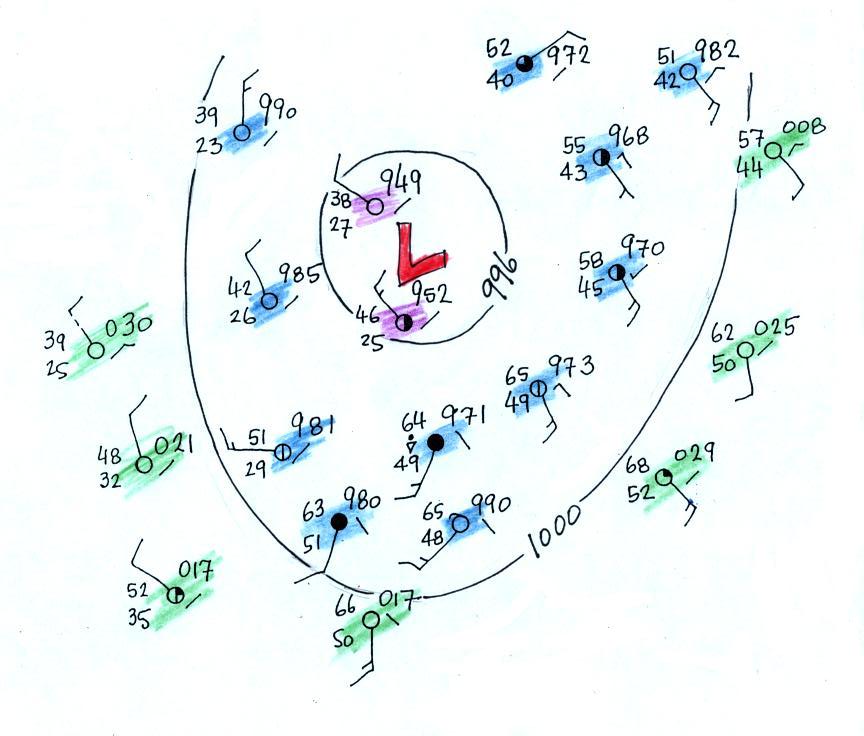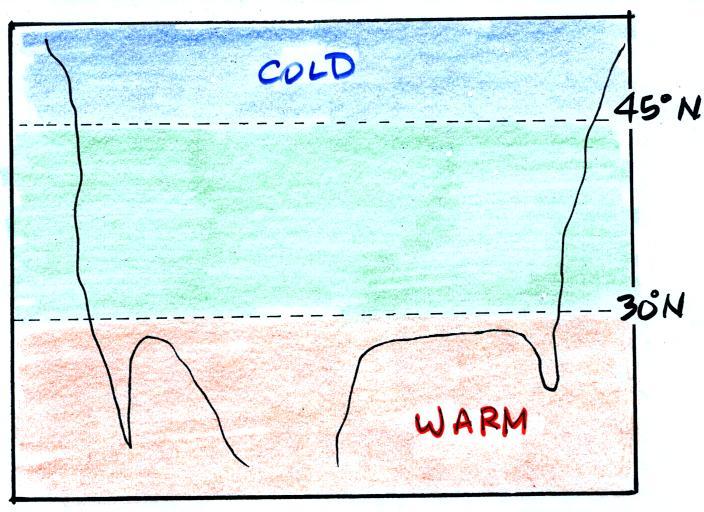


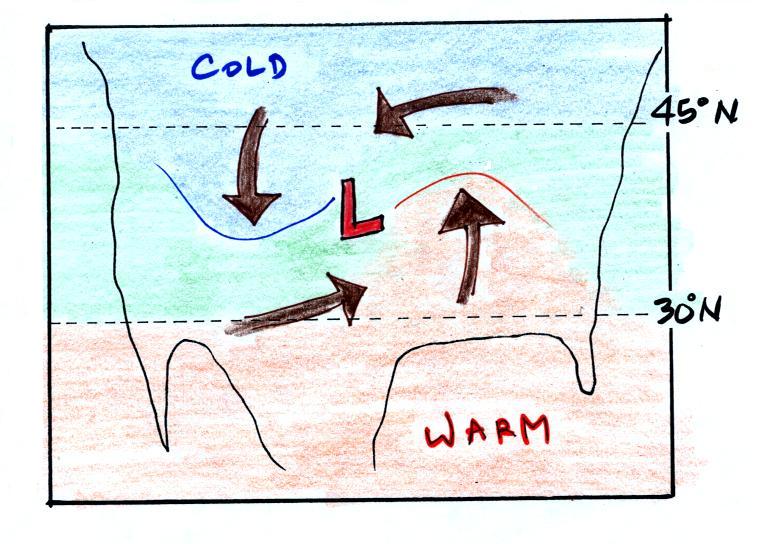

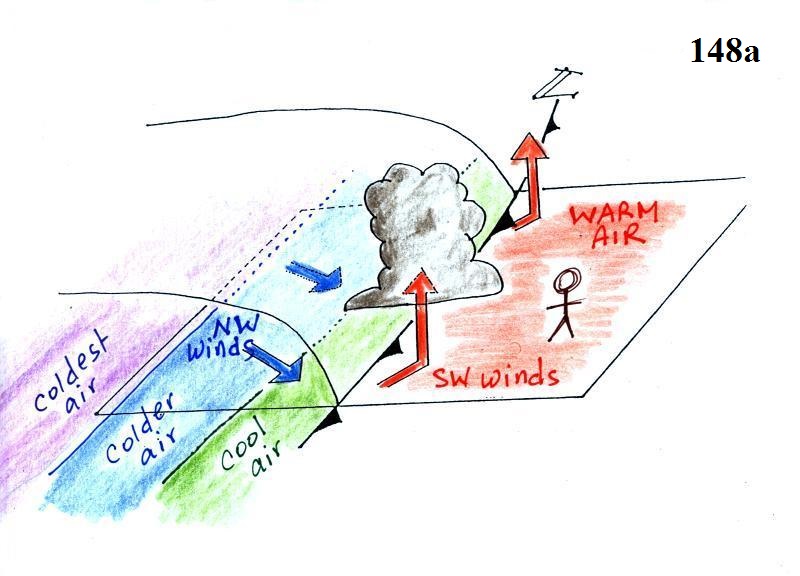
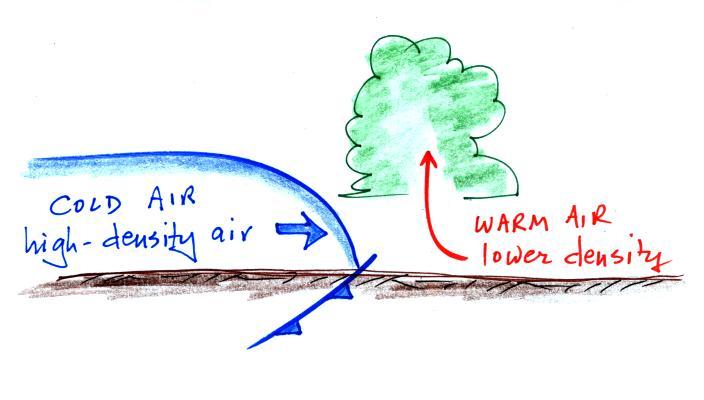 |
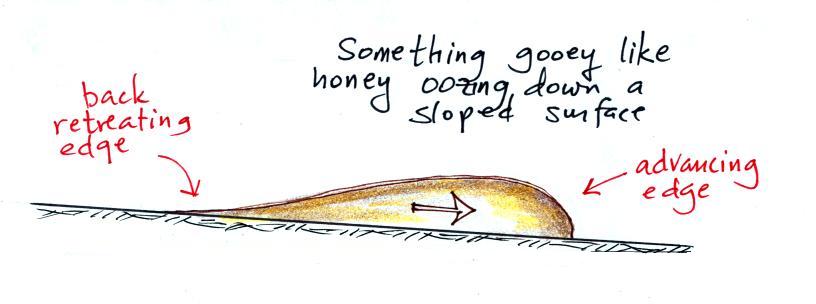 |
 |
 |

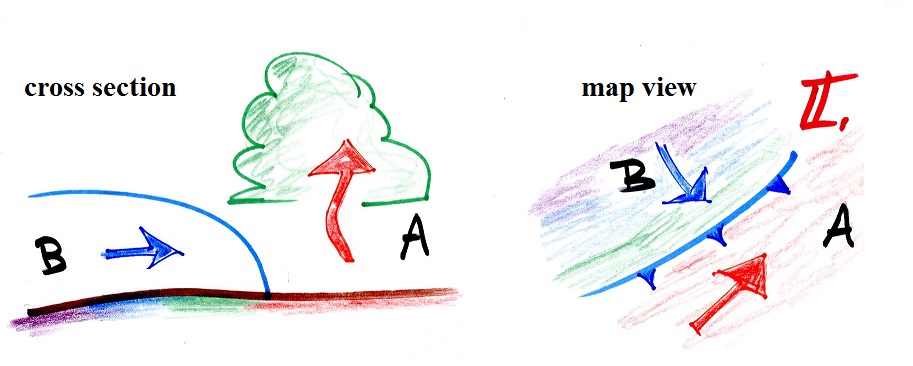
| Weather
variable |
Behind |
Passing |
Ahead |
| Temperature |
cool, cold,
colder* |
warm |
|
| Dew
Point |
usually much
drier** |
may be moist
(though that is often not the case here in the desert southwest) |
|
| Winds |
northwest |
gusty winds (dusty) |
from the southwest |
| Clouds,
Weather |
clearing |
rain clouds,
thunderstorms in a narrow band along the front (if the warm air mass is moist) |
might see some high
clouds |
| Pressure |
rising |
reaches a minimum |
falling |
